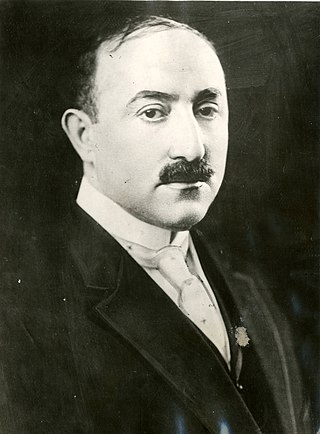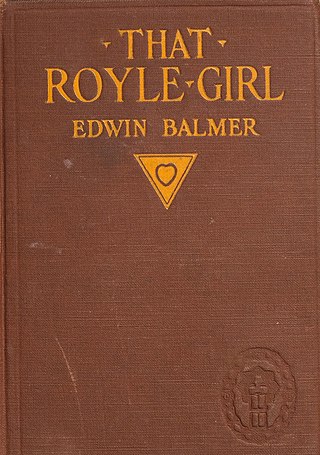Related Research Articles

David Wark Griffith was an American film director. Considered one of the most influential figures in the history of the motion picture, he pioneered many aspects of film editing and expanded the art of the narrative film.

Gladys Louise Smith, known professionally as Mary Pickford, was a Canadian-American film actress and producer. A pioneer in the American film industry with a Hollywood career that spanned five decades, Pickford was one of the most popular actresses of the silent film era. Beginning her film career in 1909, by 1916 Pickford became Hollywood's first millionaire, and at the height of her career had complete creative control of her films and was one of the most recognizable women in the world. Due to her popularity, unprecedented international fame, and success as an actress and businesswoman, she was known as the "Queen of the Movies". She was a significant figure in the development of film acting and is credited with having defined the ingénue type in cinema, a persona that also earned her the nickname "America's Sweetheart".

Florence Lawrence was a Canadian-American stage performer and film actress. She is often referred to as the "first movie star", and was long thought to be the first film actor to be named publicly until evidence published in 2019 indicated that the first named film star was French actor Max Linder. At the height of her fame in the 1910s, she was known as the "Biograph Girl" for work as one of the leading ladies in silent films from the Biograph Company. She appeared in almost 300 films for various motion picture companies throughout her career.

Wilhelm Fried Fuchs, commonly and better known as William Fox, was a Hungarian-American film industry executive who founded the Fox Film Corporation in 1915 and the Fox West Coast Theatres chain in the 1920s. Although he lost control of his film businesses in 1930, his name was used by 20th Century Fox and continues to be used in the trademarks of the present-day Fox Corporation, including the Fox Broadcasting Company, Fox News, Fox Sports and Foxtel.

The Biograph Company, also known as the American Mutoscope and Biograph Company, was a motion picture company founded in 1895 and active until 1916. It was the first company in the United States devoted entirely to film production and exhibition, and for two decades was one of the most prolific, releasing over 3000 short films and 12 feature films. During the height of silent film as a medium, Biograph was the most prominent U.S. film studio and one of the most respected and influential studios worldwide, only rivaled by Germany's UFA, Sweden's Svensk Filmindustri and France's Pathé. The company was home to pioneering director D. W. Griffith and such actors as Mary Pickford, Lillian Gish, and Lionel Barrymore.

Linda Arvidson was an American stage and film actress. She became one of America's early motion picture stars while working at Biograph Studios in New York, where none of the company's actors, until 1913, were credited on screen. Along with Florence Lawrence, Marion Leonard, and other female performers there, she was often referred to by theatergoers and in trade publications as simply one of the "Biograph girls". Arvidson began working in the new, rapidly expanding film industry after meeting her future husband D. W. Griffith, who impressed her as an innovative screen director. Their marriage was kept secret for reasons of professional discretion.

Stanner E.V. Taylor was an American screenwriter and film director of the silent era. He wrote for more than 100 films between 1908 and 1929.

The Lonedale Operator is a 1911 short American drama film directed by D. W. Griffith, starring Blanche Sweet and written by Mack Sennett for the Biograph Company. The plot of the film involves a girl who takes over a telegraph station after her father takes ill. After the payroll for the town's mine is delivered, two drifters try to steal the money. Their robbery is foiled because the girl is able to telegraph for help and then hold the would-be robbers off until help arrives. The Lonedale Operator includes "elements of romance, drama, suspense, Western, and even a bit of comedy near the end."

Dark Cloud was a First Nations silent film actor, born Elijah Tahamont. He was a chief of the Abenaki, a First Nations band government belonging to the Eastern Algonquian peoples of northeastern North America.

James Young Deer, also known as J. Younger Johnson or Jim Young Deer, was actually born James Young Johnson in Washington, D.C. Although he was identified in the early Hollywood trade paper Moving Picture World as of the Winnebago Tribe of Nebraska, his ancestry is of the Nanticoke people of Delaware. He became an early film actor, director, writer, and producer. He is believed to be the first Native American filmmaker/producer in Hollywood. Together with his wife and partner Lillian St. Cyr, Winnebago, the couple were labeled an "influential force" in the production of one-reel Westerns during the first part of the silent film era. Their films, along with several others of the silent era, were notable for portraying Native Americans in a positive light.

The Last Drop of Water is a 1911 American short silent Western film directed by D. W. Griffith and starring Blanche Sweet. Three known prints of the film survive. It was filmed in the San Fernando desert as well as Lookout Mountain, California. The film was considered the "most ambitious film made by Griffith during the California trip of 1911" before the Biograph company moved back to New York. It was filmed on or between the 14 May and May 20, 1911. It was reissued by Biograph August 13, 1915.

That Royle Girl is a 1925 American silent comedy film directed by D. W. Griffith and released by Paramount Pictures. The film was based on the novel of the same name by Edwin Balmer, and starred Carol Dempster, W. C. Fields and Harrison Ford. It is now considered lost.

The Call of the Wild is a 1908 American short silent Western film directed by D. W. Griffith and produced by the American Mutoscope and Biograph Company. The short, a "one-reeler", stars Charles Inslee, Harry Solter and Florence Lawrence. Its interior scenes were shot at Biograph's studio facilities in New York City, and its exteriors were filmed on location in Coytesville, today one of the oldest communities in Fort Lee, New Jersey.
Wallace McCutcheon Sr. was a pioneer cinematographer and director in the early American motion picture industry, working with the American Mutoscope & Biograph, Edison and American Star Film companies. McCutcheon's wealth of credits are often mixed up with the small handful of films directed by his son, Wallace McCutcheon Jr. (1884–1928).

Braveheart is a 1925 American silent contemporary Western film directed by Alan Hale Sr. and starring Rod La Rocque. The story focuses on members of a tribe of Indians who are being intimidated by the owners of a canning company seeking to violate a treaty protecting the tribe's fishing grounds. Braveheart is a remake of the 1914 film Strongheart directed by James Kirkwood Sr. and produced by the American Mutoscope and Biograph Company.
Kit Carson is one of the earliest Western films, being released by the American Mutoscope and Biograph Company in October 1903. Part of the footage was reused in The Pioneers, another Western short also released by Biograph in October 1903. Both films were shot on location in the Adirondack Mountains of New York.
A Daughter of the Sioux is a 1925 American silent Western film directed by Ben Wilson. It stars Ben Wilson, Neva Gerber, and Robert Walker, and was released on December 28, 1925.
References
- ↑ Tim Dirks. "The History of Film / The Pre-1920s / Early Cinematic Origins and the Infancy of Film / Part 2". Filmsite.org.
- ↑ Aquila, Richard (April 16, 2015). The Sagebrush Trail: Western Movies and Twentieth-Century America. University of Arizona Press. p. 15. ISBN 9780816531547.
- ↑ Dar Haddix (November 27, 2003). "Feature: A century of Western movies". United Press International.
- 1 2 "The Pioneers". silentera.com.
- ↑ "The Pioneers (1903): Notes". Turner Classic Movies.
- ↑ Gomery, Douglas; Pafort-Overduin, Clara (February 28, 2011). Movie History: A Survey: Second Edition. Taylor & Francis. p. 23. ISBN 9781136835254.